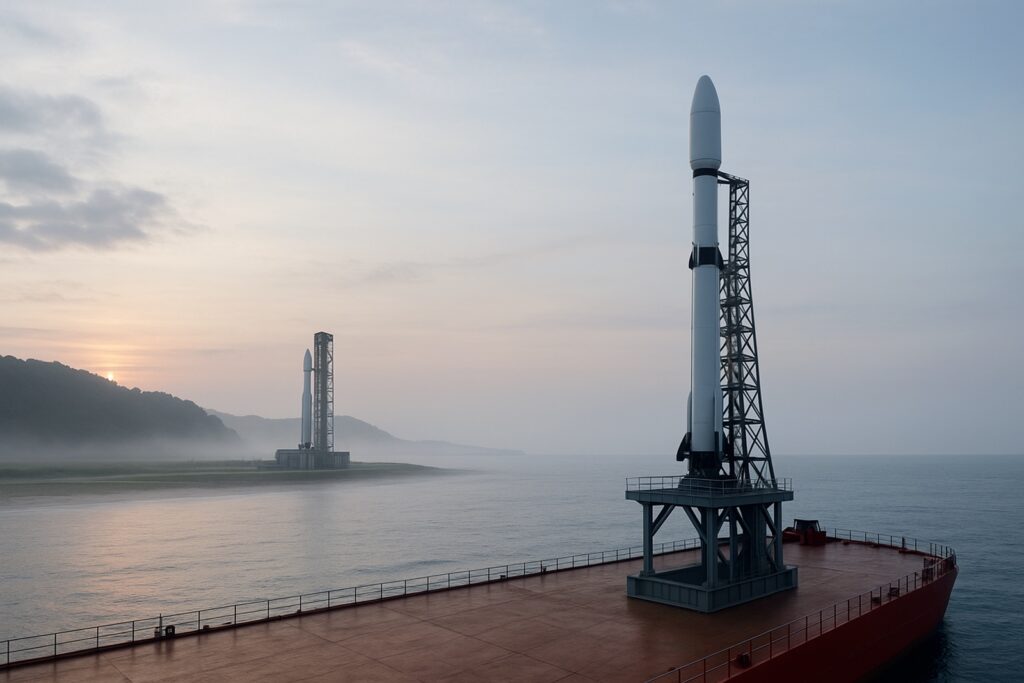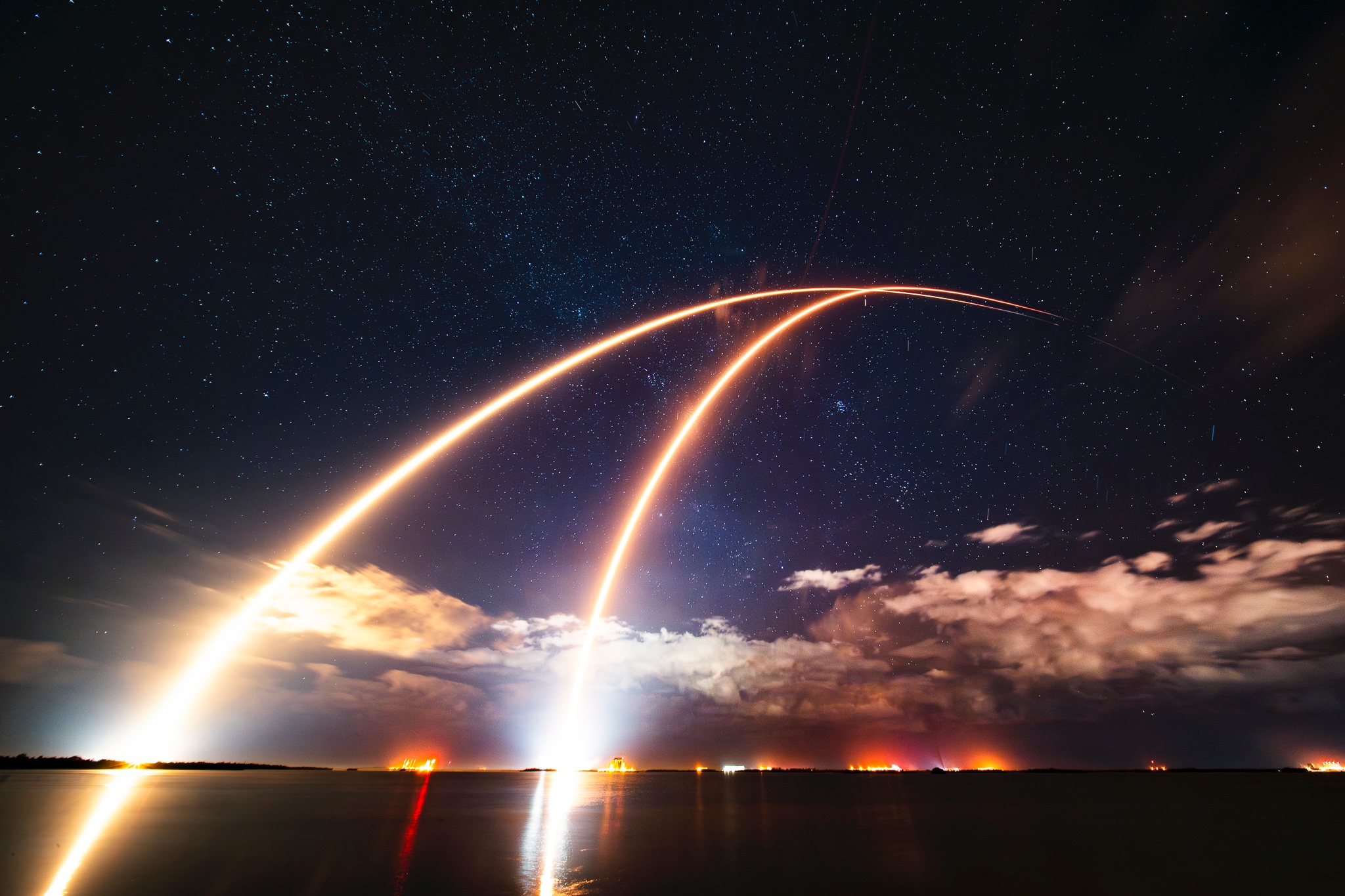Now Reading: China to launch Shenzhou-22 spacecraft Nov. 25 to provide lifeboat for astronauts
-
01
China to launch Shenzhou-22 spacecraft Nov. 25 to provide lifeboat for astronauts
China to launch Shenzhou-22 spacecraft Nov. 25 to provide lifeboat for astronauts


HELSINKI — China is set to launch an uncrewed Shenzhou spacecraft to the Tiangong space station to provide the Shenzhou-21 astronauts with a means of returning home.
An airspace closure notice issued Nov. 17 indicates that China is preparing the Shenzhou-22 spacecraft and a Long March 2F rocket for launch at around 11:10 p.m. Eastern Nov. 24 (0410 UTC, Nov. 25) from Jiuquan Satellite Launch Center in the Gobi Desert. China’s human spaceflight agency has yet to publicly announce the plan.
The move comes after the Shenzhou-20 crew needed to use the recently-arrived Shenzhou-21 spacecraft to return home Nov. 14 after space debris damaged their own Shenzhou-20 spacecraft. This leaves the Shenzhou-21 astronauts apparently without a lifeboat in the case of a catastrophic emergency, such as depressurization or fire aboard Tiangong.
The Shenzhou-21 astronauts—commander Zhang Lu and crewmates Zhang Hongzhang and Wu Fei—launched to Tiangong Oct. 31 in the Shenzhou-21 spacecraft, beginning their six-month-long mission. They were handed control of Tiangong Nov. 4 by the outgoing Shenzhou-20 crew, who were due to depart for Earth the next day after completing their own half-year stint in orbit. That journey was however postponed early Nov. 5 due to the detection of a suspected debris impact which damaged a small viewport window on Shenzhou-20.
Shenzhou-22, originally scheduled to launch the next crew to Tiangong around April-May 2026, will now launch without a crew, according to Zhou Yaqiang, an official with the China Manned Space Engineering Office (CMSEO), speaking to China Central Television Nov. 15. Zhou stated that preparations were underway and that food and supplies for the astronauts and equipment for the space station would be aboard Shenzhou-22. The unforeseen extended stay of the three Shenzhou-20 astronauts would have drained supplies and put additional strain on Tiangong’s life support systems.
CMSEO, China’s human spaceflight agency, stated previously that the Long March 2F and Shenzhou spacecraft for the subsequent mission would be in a state of near-readiness at Jiuquan in case of emergencies on Tiangong, and could be readied in 8.5 days in best case scenarios. The launch will come 20 days after the discovery of damage to Shenzhou-20.
Variables in determining how long it takes to ready and launch a backup Shenzhou spacecraft likely include availability and readiness of the 921 complex launch pads—the primary of which, LS-91/43, had just launched Shenzhou-21—weather, range safety and orbital mechanics, as well as the state of the spacecraft and launcher. Launch timing is constrained by orbital phasing requirements between Jiuquan and Tiangong, which can add days of delay even if the hardware is ready.
China will deorbit the Shenzhou-20 spacecraft at a later date. In theory, the spacecraft remains docked and physically accessible, but CMSEO has determined it does not meet safety criteria for returning a crew.
“Based on preliminary analysis of photographs, design review, simulation analysis, and wind tunnel testing, a comprehensive assessment determined that the Shenzhou-20 manned spacecraft’s return capsule window glass had developed a minor crack, most likely caused by an external impact from space debris, thus failing to meet the requirements for a safe crewed return,” a Nov. 14 CMSEO statement read. “The Shenzhou-20 manned spacecraft will remain in orbit to conduct relevant experiments.”
The crack to the heat-resistant glass outer layer of the viewport window could cause the glass to break, exposing inner layers to high-temperature plasma during reentry, possibly leading to the loss of integrity of the window and decompression of the spacecraft.
Meanwhile, the Shenzhou-20 astronauts, commander Chen Dong and Chen Zhongrui and Wang Jie, arrived in Beijing Nov. 15 after landing in the Dongfeng landing area near Jiuquan, Nov. 14. The trio will now enter a quarantine and recovery period, undergoing comprehensive medical examinations and health assessments, and will be allowed to rest and recuperate, according to a CMSEO statement. They will meet the press after this period.
Stay Informed With the Latest & Most Important News
Previous Post
Next Post
-
 012024 in Review: Highlights from NASA in Silicon Valley
012024 in Review: Highlights from NASA in Silicon Valley -
 02Panasonic Leica Summilux DG 15mm f/1.7 ASPH review
02Panasonic Leica Summilux DG 15mm f/1.7 ASPH review -
 03How New NASA, India Earth Satellite NISAR Will See Earth
03How New NASA, India Earth Satellite NISAR Will See Earth -
 04And Thus Begins A New Year For Life On Earth
04And Thus Begins A New Year For Life On Earth -
 05Astronomy Activation Ambassadors: A New Era
05Astronomy Activation Ambassadors: A New Era -
06SpaceX launch surge helps set new global launch record in 2024
-
 07Space Force plans new ‘Futures Command’ amid pressure to speed up modernization
07Space Force plans new ‘Futures Command’ amid pressure to speed up modernization




















